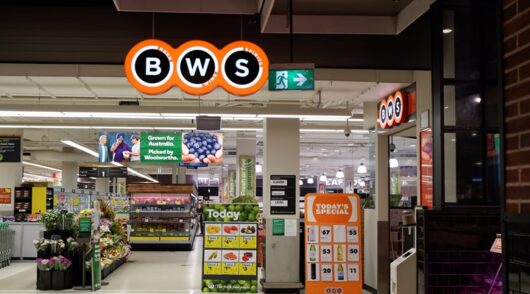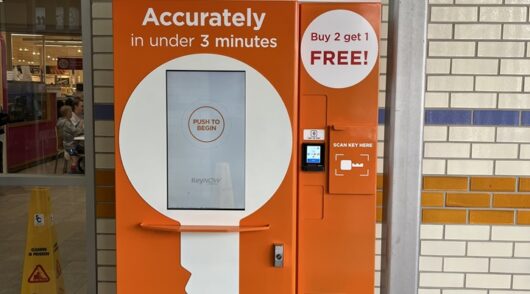 The new dawn of profitable retail
The new dawn of profitable retail
If we want to improve performance, we need to establish what we do and don’t know about the challenge ahead.
In the retail sector, we know that customers expect a lot; that speed and accuracy are important for any kind of interaction – be it customer service or order fulfilment; and that speed cannot be offset with a drop in quality.
We also know that we have to make sales as profitable as we can and that means holding prices as close to RRP as possible. It also means stripping cost out of the supply chain without letting customer experience drop.
Australian retailers know changes need to be made throughout their businesses in order to stay competitive but can every retailer say that they know where to start? And which areas of the business are most impacted by these driving forces and how do you connect these best laid plans together and turn them into reality?
Down to business first
Integration of legacy technologies can be cumbersome. Retailers need to keep their core business systems in place, but without a single platform to view stock in real-time, the rest is pointless.But once you have the supply chain commerce platform established, the first answer is surprisingly not more technology; it’s in fact, all about processes.
Retailers, especially in the Australia market where there has been a significant growth in online trading, require the appropriate strategic business processes to be put into place to cope with the fast changing commerce landscape.Without doing this first, any new, innovative technology will b elimited in its impact. If we think back to the late ‘90s, retail fulfilment was so much easier.
E-commerce existed, but only a few people used it. Channels were separate and fulfilling online orders was relatively straightforward to manage. Fast forward 15 years and click and collect and other forms of cross-channel shopping are omnipresent and the resulting new order flows raises some difficult questions, such as ‘who’s sale is it?’
When multiple channels participate in a transaction, how do you measure the performance of each one?
The answer is, you shouldn’t. Retailers need to move away from that view of performance, because it’s a barrier to great service. But re-arranging your business around new performance metrics is not always easy. The key challenge is breaking free from entrenched processes.
Where to begin
Start by clearly defining your business goals. Once the whole business understands what you’re aiming to do, it’s easier to establish and communicate departmental targets.
The goals we should look at are around profitability and customer experience. Those two areas both require coordination across the whole business, however, are further improved by reducing the gaps in your business through single inventory visibility and ‘one retailer’ fulfilment.
This is not initially a technology challenge; rather it is about getting your business organised and geared towards the things that are most important.
Simply sell better
To recap, stage one is to integrate legacy technology into an IT platform that can support growth. Stage two is to restructure the business so that it’s focused on profitability and service, not sales and top line revenue.
Stage three, then, is about taking those next steps. We know that we need to be quicker, offer better service and become more profitable, but how can retailers achieve this?
When a customer buys a product, their stipulations often include when they need it and where they want to pick it up from. This forces retailers to firstly establish whether it has the product. Single stock visibility, which you’ve achieved in stage one, means you can make some sophisticated decisions, but the scale of your business means that you need to automate them.
A Distributed Order Management solution, however, finds stock within the supply chain network and serves it to the customer. This is new to many but is the best way to make profitable fulfilment decisions.
It’s unique as it provides multi-channel retailers with the tools to manage, monitor and optimise cross-channel order management from the time of order entry through sourcing, allocation, shipping, and settlement.
So how does that process work? First, you need to have a tiered pricing model in your merchandising system. This should reflect where a product is in the markdown lifecycle. A product in Band 6, for example, is full price. A product in Band 1 is at cost price.
These tiers affect fulfilment decision making. Order management historically made decisions based on location – with the perfect logic that the time and cost would be minimal to fulfil from there. However, if the nearest product is in Band 6, but a product 100 miles further afield is in Band 3, the decision changes. The opportunity for a full price sale of a product where it’s marked down elsewhere means you’re going to make more profit.
You should also identify the different replenishment layers in your business and associate how easy fulfilment is from those units. If there are only two items left on the shop floor, you may want to ship from the warehouse anyway.
It’s also important to establish optimal capacity when looking across these replenishment layers.
At a glance, one store with 200 items versus one store with 10 would prompt a simple replenishment decision – take from the store with 200. But if that store is in a busy Sydney CBD store and the other is a store in Western Sydney, your decision may be different.
The 200 items may last the Sydney CBD store for one day, the 10 items might keep the Western Sydney store in stock for one week. In which case, you should source fromthe Western Sydney store to make your replenishment cycle easier.
All of these decisions can be made in real time to make sure that every sale is a profitable one. But profitable fulfilment does not stop there. There are otherfactors that need to be considered.
Click and collect continues its popularity with consumers. Ship from store is becoming more profitable for retailers for certain products. Both use similar structures: orders placed online are fulfilled using stock from brick-and-mortar stores.
If you have a busy high street store, do you want people picking up orders from there when staff are at maximum capacity already? This will only add to longer queues and potentially lost sales. Similarly, do you use the busy Sydney CBD store to ship out orders, for the same reason?
The alternative is that you direct customers towards another store; one that’s close by, but not as busy. This is where labour management solutions can help makes these decisions simpler.
However there are exceptions to these rules. For example, if your best customer wants to pick up from the Sydney CBD store, do you still send them elsewhere? If you can see from your CRM system that they are a frequent high spender, you might send them to their store of choice as they may buy more once they’re there and can ensure the customer is kept happy.
Distributed order management (DOM) is a complex web of decisions – but leads to more profit and sales. Manhattan Associates has worked with many customers to integrate real time visibility of store inventory into their websites.
We have seen up to a 23 per cent uplift in sales – in the first week of using our DOM solution, and in this particular instance, the use of the solution highlighted the sales this retailer was missing out on through a lack of stock in the eComm DC and lack of stock visibility. Manhattan-enabled business and supply chain improvements such as this explain why the company was recently named a leader in Forrester Research Inc.’s
“The Forrester WaveTM: Omni-Channel Order Management, Q3 2014 and as the global leading supplier of “Total Warehouse Management Systems Software and Services” in ARC Advisory Group’s “Warehouse Management Systems Global Market Research Study.
It’s impossible to know the level of sales that you’re missing until you take the steps outlined above. If you had infinite stock, you’d know the real level of achievable sales. Real time visibility of all your stock doesn’t quite make your stock infinite, but it’s the closest you can get – and it makes a huge impact.
Managing stock in a way that factors in all meaningful information and variables is the road to profitability.
For more information on how Manhattan Associates can help your organisation visit http://www.manh.com.au
Join us at Manhattan Exchange
Manhattan’s annual Exchange Australia event will be held in Melbourne on October 28.
Attendees will be able to meet and exchange ideas with Manhattan executives, the supply chain community, customers, and industry experts.
Attendees will also have the opportunity to learn how leading organisations are embracing new operational approaches and technologies to help them adapt to the new omni-channel world and help them get closer to their customers.
For more information and to register, visit http://www.manh.com.au/events/manhattan-exchange-events






